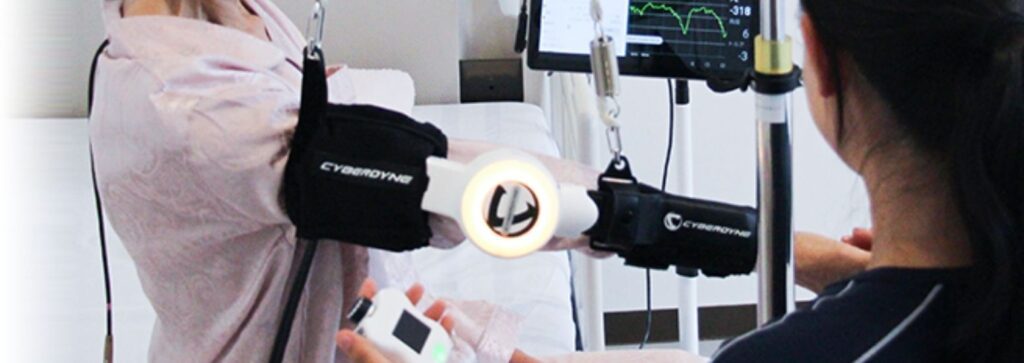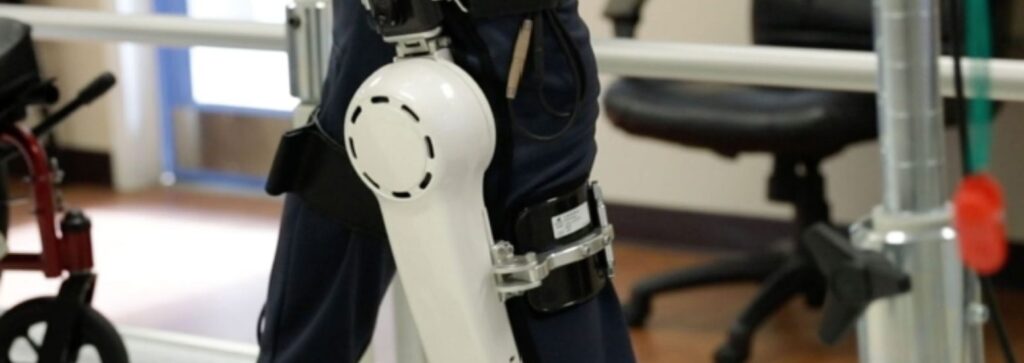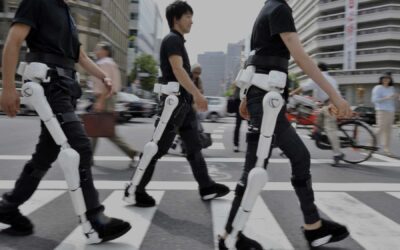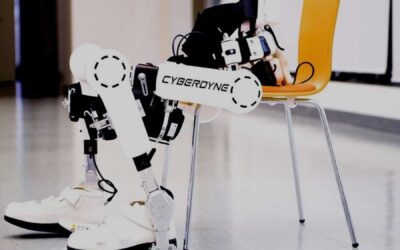Japan’s Cyberdyne HAL® brings in a neurologically controlled Robo suit to treat patients with paralysis.
HAL®, Cyberdyne’s Hybrid Assistive Limb, improves locomotor activity in spinal cord injury, causing paralysis. This neurorehab device helps the patients move their paralysed legs based on their intention and the device does not dictate its movements on its own.
Principle of The Wearable Cyborg™ HAL
HAL® functions in accordance with the motor intention of the wearer and internal ideal movement patterns as if it were a part of the body. Even if the muscles barely function, the sensory receptors such as those found in muscle spindle fibres get activated by the device’s movement, and this sensory information is fed back to the brain in real-time.
Cyberdyne Treatment for Paralysis

- Command Signals
The brain first generates command signals. Next, the muscles receive the command signals generated by the brain. When a person’s body moves, they first think about the motions in their brain. By the thought “I want to walk.” our brain channelises the required signals to the muscles needed for the motion through nerves.
- Transmission of Signal
Every muscle in a healthy body can receive signals from the brain to it and move as strongly and fast as intended. In the case of HAL, it is done with help of the technology involved in stimulating the nervous system.
- Receiving Signals
Signals sent to muscles by the brain leak on the skin surface as very faint signals, so-called “bio-electric signals”. HAL® can read BES only by attaching the originally developed detectors on the surface of the weaver‘s skin. By consolidating various information, HAL recognises what sort of motions the patient intends.
- Perceiving Signals
A human’s speed of thinking, controlling the muscle, and moving the joints are extremely rapid. HAL, as well as man, can process various information instantly. When the body starts moving, HAL moves too. Therefore, HAL® can assist the wearer’s movements.
- Feedback
The mechanism to move the human body does not end up with only moving muscles. The brain confirms how the body would have moved and on what sort of signal. When HAL® has appropriately assisted the motions of walking, the “I could walk!” feeling is fed back to the brain. This is how the brain can learn to emit necessary signals for “walking” gradually. This leads to “the important first step” in walking the physically challenged individual without being assisted by HAL®.
HAL® is the only robot that can provide appropriate solutions for the motions of the brain.
Rehabilitation by HAL

Cyberdyne’s Hybrid Assisted Limb can help even the most sedentary of patients and improve their quality of life. Locomotor training performed using a neurologically controlled cyborg HAL® enables the neural activity and repetitive exercises of specific tasks.
The Wearable Cyborg™ HAL promotes learning and leads to the restructuring of the appropriate proprioceptive feedback loop. HAL is designed to establish a pathway for signals that reach the muscles to cause a meaningful response through movement
For a free demo, connect with Cyberdyne at https://rehabmodalities.com/



